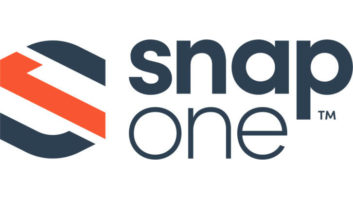The Consumer Electronics Association (CEA) is best known as the producer of International CES, but its work year-round on policy matters is equally important.
Here in Washington and state capitals nationwide, amid issues of national security, the fight against terrorism and the war in Iraq, legislation and regulations that impact the consumer electronics industry are under consideration every day. With the digital transition at warp speed, the challenges are great as technology continues to outpace regulations that in some cases were enacted less than a decade ago.
CEA’s government and legal affairs division — which advises, lobbies and reports on federal, state and international CE policy on behalf of CEA members, consumers, and the industry — had a particularly busy year. The Supreme Court decision on the Grokster file-sharing case, many state initiatives on environmental and energy issues, efforts to update the Telecommunications Act of 1996, and the continuing saga of the transition from analog to digital television had prominent profiles throughout the year.
Perhaps the most significant decision of 2005 was that Congress set a date for the end of analog television broadcasts. House and Senate budget bills include a final compromise date for the return of the analog spectrum Feb. 17, 2009. “The important thing is that there will be a definite date with enough product-planning time for the TV-set makers,” said Michael Petricone, CEA’s public policy VP. “It provides the certainty required by manufacturers, consumers, retailers and broadcasters to complete the DTV transition.”
A number of factors converged to finally bring about a date for the analog cutoff, including increased desirability of high-speed wireless broadband connections and the experiences during Hurricane Katrina, which pointed up again the need for additional spectrum for first responders. “Our nation’s first responders are now a step closer to getting the spectrum they need for effective communications, and America is a step closer to the next generation of fast, ubiquitous wireless broadband,” Petricone said.
In addition to the cutoff date the two bills differ on the allocation for a converter box subsidy with the House figure at $990 million and the Senate at $3 billion. There is considerable disagreement about the necessity of a subsidy and about the amount. Broadcasters argue that most homes with neither cable nor satellite are low-income households that would require a subsidy for a low-cost converter to complete the transition. But at a conference in New York late last year, CEA’s president/CEO Gary Shapiro argued that the importance of over-the-air broadcast is often overstated. Shapiro maintained that many viewers don’t get cable or satellite not because they can’t afford it, but simply because they don’t want it. In any event, several manufacturers have shown prototypes of set-top converter boxes designed to sell for $50 or less.
In late June, the Supreme Court announced the long-awaited Grokster decision, which was touted as the biggest since the Betamax case two decades ago. The decision didn’t seem to make anyone entirely happy and left the door open for lots of future litigation. “The immediate impact of today’s ruling is twofold: massive uncertainty and the likelihood of massive legal bills,” Shapiro said when the decision was announced. “The Court has done little to provide a clear path for legitimate innovators and manufacturers to avoid lawsuits related to copyright infringement over legitimate products and services. With this ruling the Supreme Court has handed a powerful new tool to litigious content creators to stop innovation. Innovators must now consider new murky legal rules and potentially overwhelming legal costs before bringing their product to market — or even moving forward with an innovative idea. It is essentially a ‘full employment act’ for plaintiff’s attorneys and a guarantee for further lawsuits.”
“A real shift in Intellectual Property issues became evident [in 2005],” Petricone noted, “As new technologies and products that let consumers time and place shift lawfully acquired content, some elements of the content industry look to attack new products even before they come to market.” One of the first volleys in this next wave of attacks on fair use in the digital age came last year when the recording industry asked the Federal Communications Commission (FCC) to add in-home copying restrictions to the new Digital Audio Broadcasting (or HD Radio) service that broadcasters are now launching. “This is the worst type of attack on recording rights,” Petricone said, “an attempt to knock down the consumer’s door and tell him what he can do with his new electronic device. It’s an effort to encrypt radio signals that have been free and clear over the air since Marconi.”
Other initiatives will likely bubble up in Congress in 2006 to update the 1996 Telecommunications Act, which notably didn’t even contain the word “Internet” and is straining to keep up with the technology industry’s unprecedented pace of change. CEA will continue its efforts to protect innovation, consumer choice and fair use rights.
Environmental matters including energy consumption and end-of-product-life have begun to garner attention in many states and will likely begin to gather momentum in the nation’s capital this year too. CEA is encouraging a national framework for environmental policies, including recycling and energy usage, that avoids a patchwork of state and local regulations that are inconvenient, inefficient and confusing for consumers, — authorities and manufacturers alike.













